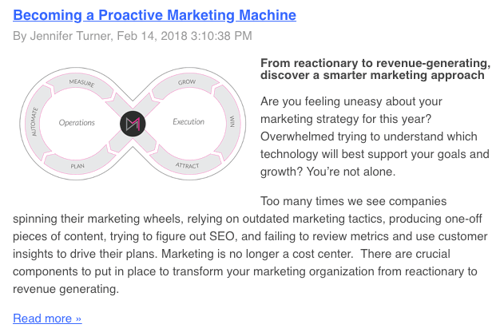Are you automating your marketing so you can focus on what really matters? Only 36% of marketers use marketing automation to reduce repetitive tasks! There are so many tasks to be done in a day, so there's no sense in wasting your valuable time on the little things that can be done automatically.
You likely already have a checklist of steps you take after certain actions, such as publishing a blog post. Instead of manually going down the list and spending several hours each time I publish something new, I use automation to cut the time in half. This simple change free’s up valuable time so we can focus on high-value business activities.
How Does Your Team Allocate Their Time?
In my past life, half of my day was spent on publishing the blog then setting up the email, testing and sending it out. This only got worse when our blog cadence was increased from once a month to once a week - or sometimes twice a week.
 Now add to that challenge a checklist for each email delivery:
Now add to that challenge a checklist for each email delivery:
- Ensuring you’ve updated the right author
- Confirming that you’ve updated the plain text version
- Updating the subject line to reflect the new blog
Marketing guru Neil Patel says he posted twice a week to improve results, and he kept ramping up until he reached key lead and traffic milestones. Imagine the room for manual errors. And yes, I have made those errors! Even at my most efficient, I spent an hour or two getting the emails out for each new piece of content, plus another hour each month getting out our monthly newsletter. We ended up spending 8 to 16 hours, two full working days without a break, each month just sending emails.
Blog Best Practices
B2B companies, that published 401+ total blog posts generated almost 3X as many leads as B2B companies that published 0 – 200 total posts.
B2C companies that published 401+ posts generated 4.5X as many leads as B2C companies that published 0 – 100 total posts. [1]
Tech Tip: Automate Your Marketing Emails
Every time a new post is added to our blog, our email marketing list gets notified automatically that there's some great new content. This drives readership and saves time.
How to automate?
- Turn on blog subscriber notification emails if you are a HubSpot user. Other marketing automation platforms such as Pardot, Marketo and Eloqua use third-party tools such as feedotter to enable automated emails.
- Preset the email sender name and email address for all blog notifications.
- Preset email subject using RSS feed to pull the newest blog title.
- Preset an email template format that can be consistently used for all blog emails using personalization tokens.


The Payoff
Adopters of automation are seeing a big impact to their productivity. When you automate repetitive tasks, it leaves you free to do the creative activities and to strategize to keep your business ahead of the curve.
Stay tuned for tip #2 of 4!
Want to learn more about the Power of Automation? Sign up for our ½ day training course on June 26th. Digital expert, VP of Shaw Communications, Manoj Jasra will be kicking things off.
Sources:
- https://neilpatel.com/blog/5-simple-steps-thatll-help-you-determine-how-often-you-need-to-blog/
- https://knowledge.hubspot.com/articles/kcs_article/cos-blog/set-up-your-blog-subscription-features-in-hubspot



